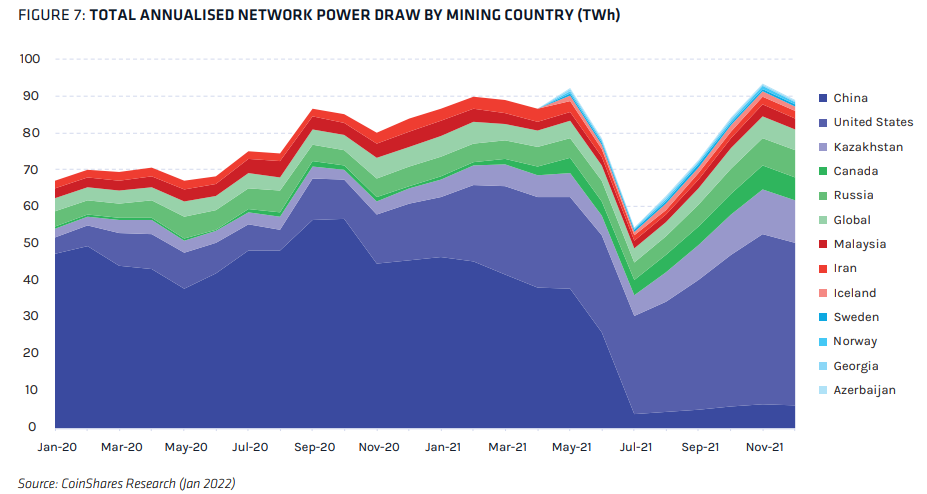Earth Day 2022 is an excellent opportunity to highlight how Bitcoin mining operations have begun to naturally gravitate toward less expensive and cleaner energy sources.

Every April 22 is the commemoration of the Earth Day and with environmental sustainability being a key topic in the global debate over Bitcoin mining, analysts say the industry has begun to naturally gravitate towards cleaner and cheaper energy sources.
According to a January report by the Bitcoin Mining Council, the global Bitcoin mining industry will be powered by 58.5 percent renewable energy by Q4 2021.
Clean energy is preferred due to a combination of environmental concerns, political pressures, and a focus on the bottom line. It’s causing a sea change that could have far-reaching consequences beyond Bitcoin (BTC) mining, affecting power grid systems all over the world.
Because of the country’s access to hydropower and other renewables, bitcoin miners in Norway are cleaner than almost anywhere else on the planet. Renewable energy accounts for 100 percent of Norway’s electricity generation.
Norway generates 157 Terrawatt hours (TWh) of power per year, with hydroelectric accounting for 88 percent and wind and thermal force accounting for the remainder.
According to data from blockchain research firm CoinShares, miners use renewable energy to produce about 1% of the total Bitcoin hash rate.

Mas Nakachi is the Managing Director of XBTO, the Bitcoin mining operation of the Miami-based XBTO Group. Founded in 2015, XBTO’s mining operation earns more than $25 million per year and claims to be entirely powered by renewable energy sources.
“Hydropower is one of the most reliable renewable energy sources available to us,” he believes.
Wind power is weather dependent, and solar power is dependent on daylight, but rivers can flow all day every day — and in some locations, water can be pumped uphill during off-peak periods to store excess energy to power generators when needed.
According to Nakachi:
“Harnessing hydroelectric power has remained an effective mechanism to maintain the most efficient mining possible.”
Whereas a February study published in the journal Energy Research & Social Science concluded that “cryptocurrency is unsustainable by design,” Nakachi believes there is a straightforward path for mining operations to develop an economically and environmentally sustainable model:
“Prioritizing some form of clean energy to power the majority of operations is, in the long term, a sustainable model for successful mining operations.”
Another option being investigated in Texas, according to a report, is the use of flexible data centers that can switch from the public grid to temporarily generate clean energy from dedicated energy generators to relieve grid stress during periods of high retail demand.
On the April 22 podcast of Brave New Coin, tech entrepreneur and self-proclaimed environmentalist Daniel Batten described a multi-pronged approach by which the Bitcoin mining industry is creating positive change. Bitcoin mining, according to Batten, incentivizes the construction of renewable energy plants and aids in the decarbonization of power grids.
Bitcoin mining, according to Batten, drives increased demand for electricity and, as a result, investments in renewable energy plants. Mining is well-suited to intermittent power sources, and it can be easily relocated to remote locations to take advantage of excess renewable energy generation.
The only issue, according to Batten, is that the industry may not be large enough to incentivize all of the renewable energy required:
“My only real concern is ‘Is Bitcoin mining requiring enough electricity to help us build up that grid to the extent we need to?’”
